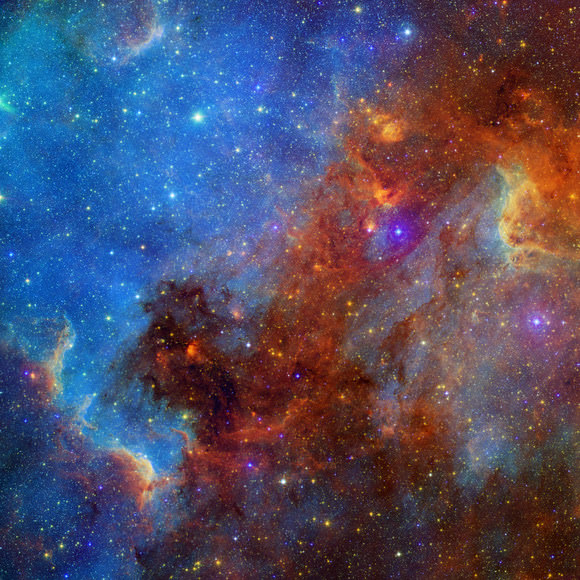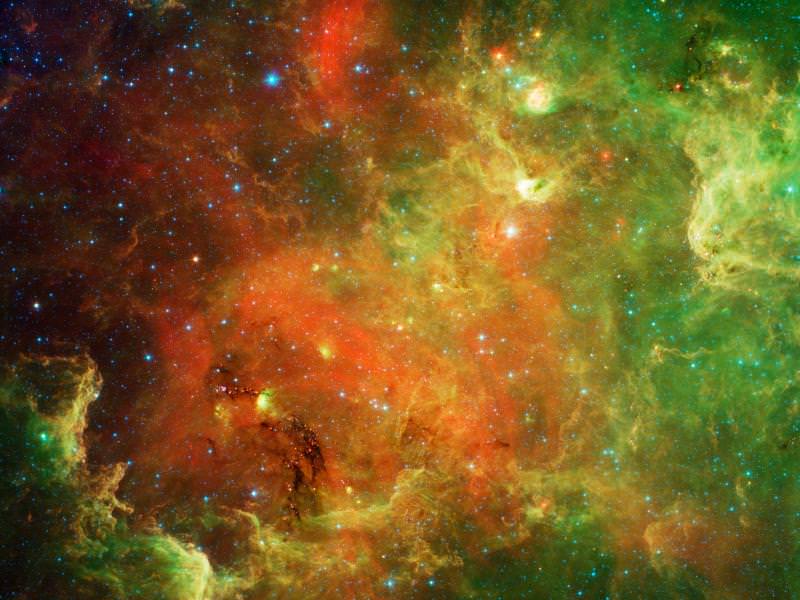[/caption]
In visible light, the North American nebula resembles its namesake continent. But looking at it in the infrared spectrum, a whole new perspective explodes into view. Clouds of dust and gas come to life, as light from massive young star heats and shape the clouds, and dramatic clusters of baby stars which can only be seen in infrared burst into view.
“One of the things that makes me so excited about this image is how different it is from the visible image, and how much more we can see in the infrared than in the visible,” said Luisa Rebull of NASA’s Spitzer Science Center at the California Institute of Technology, Pasadena, Calif. Rebull is lead author of a paper about the observations, accepted for publication in the Astrophysical Journal Supplement Series. “The Spitzer image reveals a wealth of detail about the dust and the young stars here.”
Rebull and her team have identified more than 2,000 new, candidate young stars in the region. There were only about 200 known before. Because young stars grow up surrounded by blankets of dust, they are hidden in visible-light images. Spitzer’s infrared detectors pick up the glow of the dusty, buried stars.

Combing infrared data with light from other parts of the spectrum gives astronomers a complete picture of star formation. Each different combination of observations gives insights into star formation.
But in Spitzer’s infrared view, the continent disappears. Instead, a swirling landscape of dust and young stars comes into view.
In this image, astronomers can see stars at all stages of life, from the early years when it is swaddled in dust to early adulthood, when it has become a young parent to a family of developing planets. Sprightly “toddler” stars with jets can also be identified in Spitzer’s view.
“This is a really busy area to image, with stars everywhere, from the North American complex itself, as well as in front of and behind the region,” said Rebull. “We refer to the stars that are not associated with the region as contamination. With Spitzer, we can easily sort this contamination out and clearly distinguish between the young stars in the complex and the older ones that are unrelated.”
There are a couple of mysteries about the North American Nebula still to be solved: astronomers think there must be more stars in the “Gulf of Mexico” region that must dominate the nebula and provide the main source of “power.” There is a dark tangle of clouds there that even Spitzers powerful infrared eyes can’t penetrate, but some light appears to be coming from behind that region, in the same way that sunlight creeps out from behind a rain cloud.
The nebula’s distance from Earth is also a mystery. Current estimates put it at about 1,800 light-years from Earth. Spitzer will refine this number by finding more stellar members of the North American complex.

